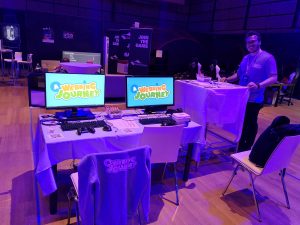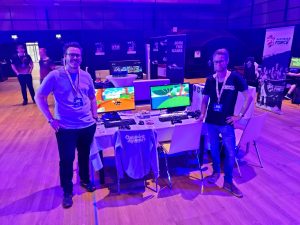From August 16.-19.2022, a CardioHPC project meeting took place in Skopje, Macedonia. Radu Prodan, Andrei Amza and Sahsko Ristvo participated for AAU.
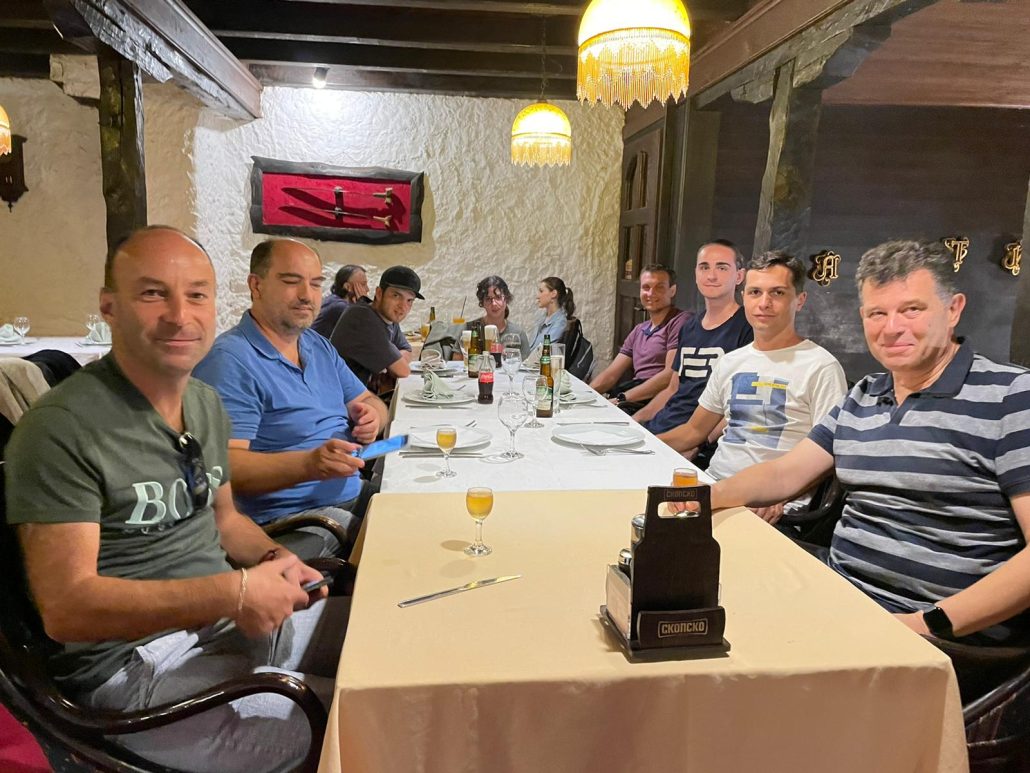
From August 16.-19.2022, a CardioHPC project meeting took place in Skopje, Macedonia. Radu Prodan, Andrei Amza and Sahsko Ristvo participated for AAU.

ACM Multimedia Conference – Doctoral Symposium Track
Lisbon, Portugal | 10-14 October 2022
Vignesh V Menon (Christian Doppler Laboratory ATHENA, Alpen-Adria-Universität Klagenfurt)
Abstract: Rapid growth in multimedia streaming traffic over the Internet motivates the research and further investigation of the video coding performance of such services in terms of speed and Quality of Experience (QoE). HTTP Adaptive Streaming (HAS) is today’s de-facto standard to deliver clients the highest possible video quality. In HAS, the same video content is encoded at multiple bitrates, resolutions, framerates, and coding formats called representations. This study aims to (i) provide fast and compression-efficient multi-bitrate, multi-resolution representations, (ii) provide fast and compression-efficient multi-codec representations, (iii) improve the encoding efficiency of Video on Demand (VoD) streaming using content-adaptive encoding optimizations, and (iv) provide encoding schemes with optimizations per-title for live streaming applications to decrease the storage or delivery costs or/and increase QoE.

The ideal video compression system for HAS envisioned in this doctoral study.
14th International Conference on Quality of Multimedia Experience (QoMEX)
September 5-7, 2022 | Lippstadt, Germany
Hadi Amirpour (Alpen-Adria-Universität Klagenfurt), Raimund Schatz (AIT Austrian Institute of Technology, Austria), and Christian Timmerer (Alpen-Adria-Universität Klagenfurt)
Abstract: We currently witness the rapidly growing importance of intelligent video streaming quality optimization and reduction of video delivery costs. Per-Title encoding, in contrast to a fixed bitrate ladder, shows significant promise to deliver higher quality video streams by addressing the trade-off between compression efficiency and video characteristics such as resolution and frame rate. Selecting encodings with noticeable quality differences in between prevents the construction of an inefficient bitrate ladder that suffers from too similar quality representations. In this respect, the VMAF metric represents a promising foundation for bitrate laddering, as it currently yields the highest video quality prediction performance. However, the minimum noticeable quality difference, referred as to just-noticeable-difference (JND), has not been properly validated for VMAF yet, with existing sources proposing highly diverse ΔVMAF step sizes ranging from two to six.
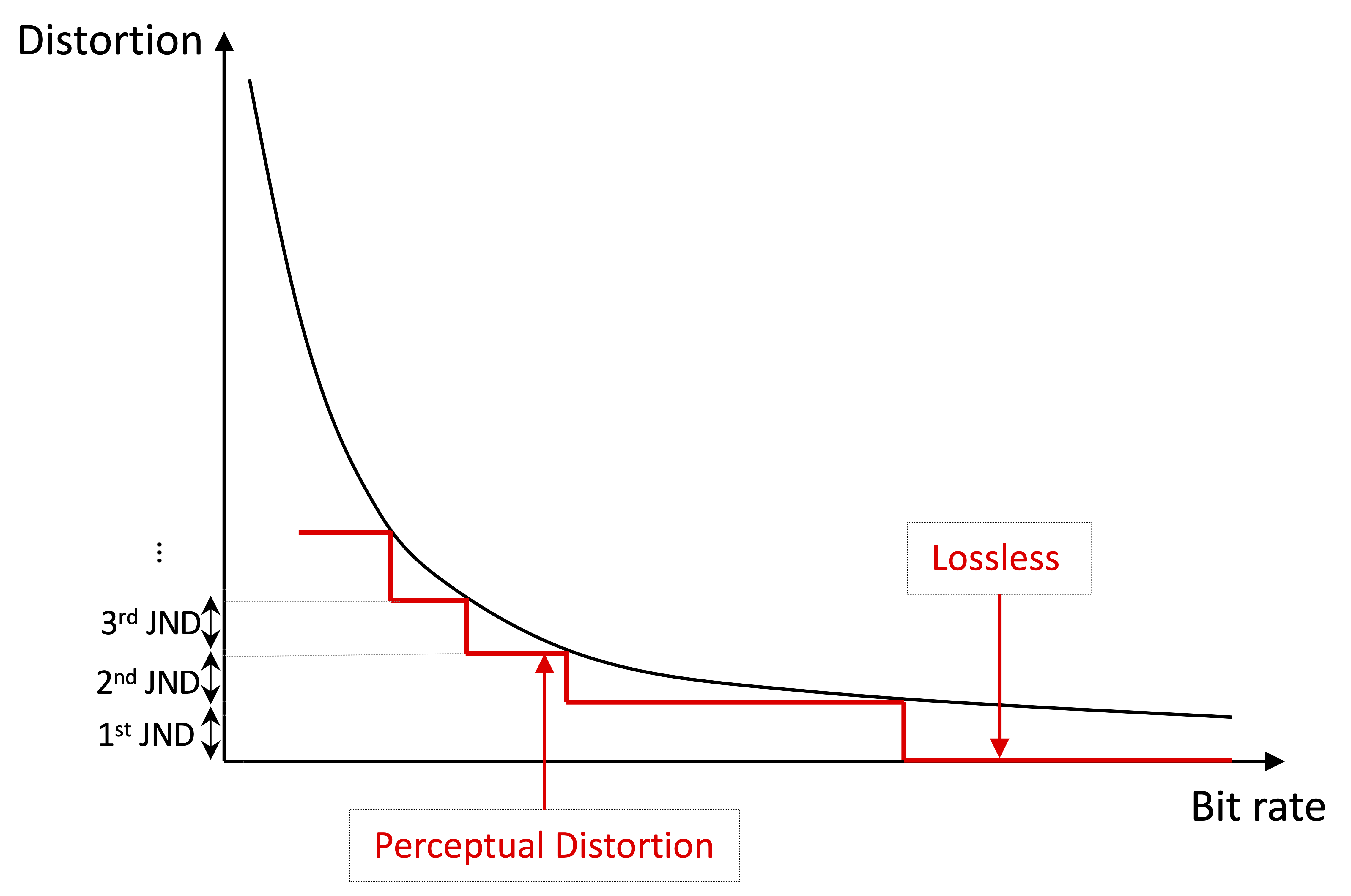
10th European Workshop on Visual Information Processing (EUVIP)
September 11-14, 2022 | Lisbon, Portugal
Hadi Amirpour (Alpen-Adria-Universität Klagenfurt), Christine Guillemot (INRIA, France), and Christian Timmerer (Alpen-Adria-Universität Klagenfurt)
Abstract: Light fields are typically represented by multi-view images and enable post-capture actions such as refocusing and perspective shift. To compress a light field image, its view images are typically converted into a pseudo video sequence (PVS) and the generated PVS is compressed using a video codec. However, when using the inter-coding tool of a video codec to exploit the redundancy among view images, the possibility to randomly access any view image is lost. On the other hand, when video codecs independently encode view images using the intra-coding tool, random access to view images is enabled, however, at the expense of a significant drop in the compression efficiency. To address this trade-off, we propose to use neural representations to represent 4D light fields. For each light field, a multi-layer perceptron (MLP) is trained to map the light field four dimensions to the color space, thus enabling random access even to pixels. To achieve higher compression efficiency, neural network compression techniques are deployed. The proposed method outperforms the compression efficiency of HEVC inter-coding, while providing random access to view images and even pixel values.
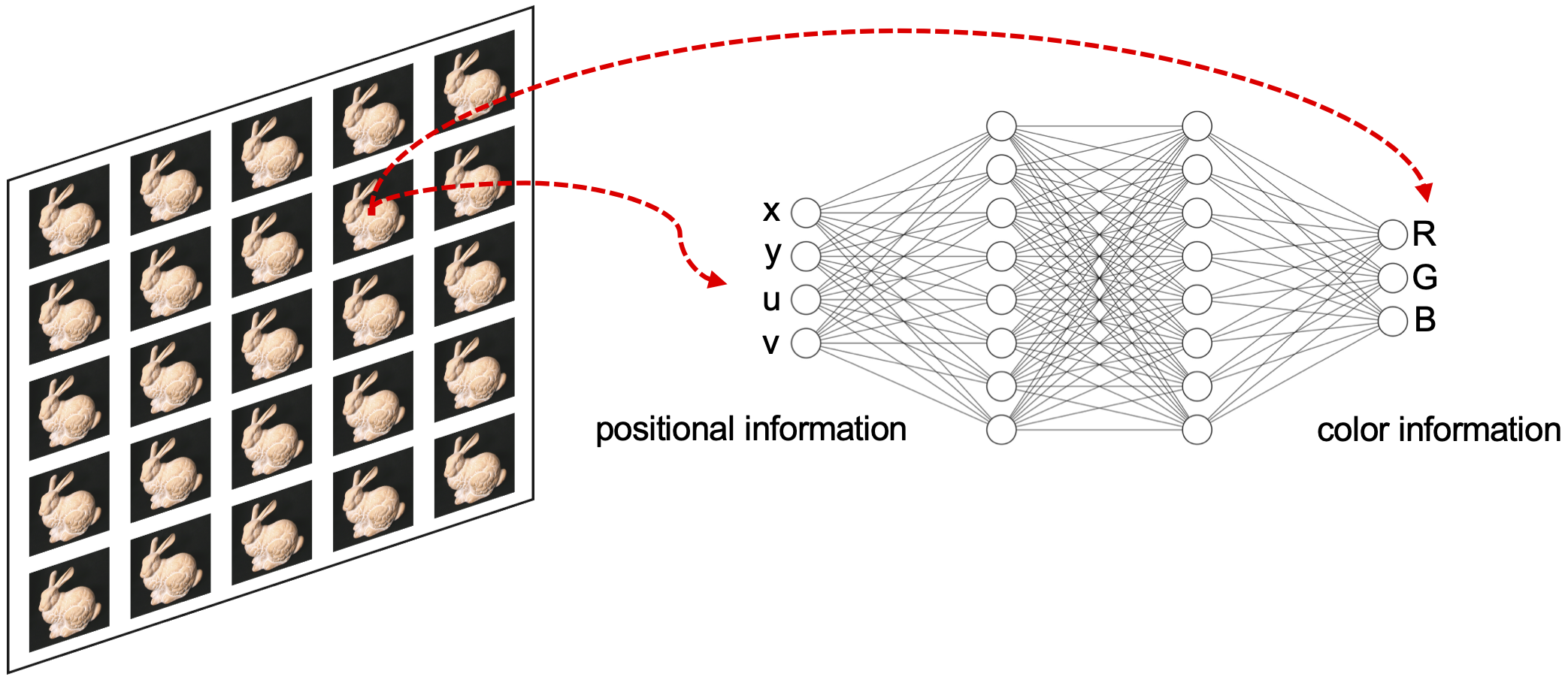
Title: MCred: Multi-Modal Message Credibility for Fake News Detection using BERT and CNN
Journal: Journal of Ambient Intelligence and Humanized Computing
Authors: Pawan Kumar Verma, Prateek Agrawal, Vishu Madaan, Radu Prodan
Abstract:
Online social media enables low cost, easy access, rapid propagation, and easy communication of information, including spreading low-quality fake news. Fake news has become a huge threat to every sector in society, and resulting in decrements in the trust quotient for media and leading the audience into bewilderment. In this paper, we proposed a new framework called Message Credibility (MCred) for fake news detection that utilizes the benefits of local and global text semantics. This framework is the fusion of Bidirectional Encoder Representations from Transformers (BERT) using the relationship between words in sentences for global text semantics and Convolutional Neural Networks (CNN) using N-gram features for local text semantics. We demonstrate through experimental results a popular Kaggle dataset that MCred improves the accuracy over a state-of-the-art model by 1.10%, thanks to its combination of local and global text semantics.

On Friday and Saturday (July 1 and July 2, 2022), Sebastian Uitz presented his game “A Webbing Journey” with his partner Manuel Santner at the Level Up event in the Messezentrum Salzburg. This was the biggest event they presented their game at, with a 300m² area for indie games and over 20.000m² in total. Over 6.500 people visited the event, and 2 PCs were provided for their game. In the end, 6 PCs were running “A Webbing Journey” due to some game developers not making it or leaving the event early. All the PCs were in constant use, and all players had so much fun playing the game, especially kids. This event and the last two provided so much feedback in the form of player tests, which have helped progress the game. The next goal is to implement all the feedback and releasing the new demo version on Steam.


Title: Matching-based Scheduling of Asynchronous Data Processing Workflows on the Computing Continuum
Heidelberg, Germany | September 6-9, 2022
Authors: Narges Mehran, Zahra Najafabadi Samani, Dragi Kimovski, Radu Prodan
Abstract: Today’s distributed computing infrastructures encompass complex workflows for real-time data gathering, transferring, storage, and processing, quickly overwhelming centralized cloud centers. Recently, the computing continuum that federates the Cloud services with emerging Fog and Edge devices represents a relevant alternative for supporting the next-generation data processing workflows. However, eminent challenges in automating data processing across the computing continuum still exist, such as scheduling heterogeneous devices across the Cloud, Fog, and Edge layers. We propose a new scheduling algorithm called C3-MATCH, based on matching theory principles, involving two sets of players negotiating different utility functions: 1) workflow microservices that prefer computing devices with lower data processing and queuing times; 2) computing continuum devices that prefer microservices with corresponding resource requirements and less data transmission time. We evaluate C3-MATCH using real-world road sign inspection and sentiment analysis workflows on a federated computing continuum across four Cloud, Fog, and Edge providers. Our combined simulation and real execution results reveal that C3-MATCH achieves up to 67% lower completion time compared to three state-of-the-art methods.
ACM Multimedia Conference – OSS Track
Lisbon, Portugal | 10-14 October 2022
Abdelhak Bentaleb (National University of Singapore), Zhengdao Zhan (National University of Singapore), Farzad Tashtarian (Christian Doppler Laboratory ATHENA, Alpen-Adria-Universität Klagenfurt), May Lim (National University of Singapore), Saad Harous (University of Sharjah), Christian Timmerer (Christian Doppler Laboratory ATHENA, Alpen-Adria-Universität Klagenfurt), Hermann Hellwagner (Christian Doppler Laboratory ATHENA, Alpen-Adria-Universität Klagenfurt), and Roger Zimmermann (National University of Singapore)
Low latency live streaming over HTTP using Dynamic Adaptive Streaming over HTTP (LL-DASH) and HTTP Live Streaming} (LL-HLS) has emerged as a new way to deliver live content with respectable video quality and short end-to-end latency. Satisfying these requirements while maintaining viewer experience in practice is challenging, and adopting conventional adaptive bitrate (ABR) schemes directly to do so will not work. Therefore, recent solutions including LoL$^+$, L2A, Stallion, and Llama re-think conventional ABR schemes to support low-latency scenarios. These solutions have been integrated with dash.js that support LL-DASH. However, their performance in LL-HLS remains in question. To bridge this gap, we implement and integrate existing LL-DASH ABR schemes in the hls.js video player which supports LL-HLS.
Moreover, a series of real-world trace-driven experiments have been conducted to check their efficiency under various network conditions including a comparison with results achieved for LL-DASH in dash.js.

On Friday and Saturday (June 24 and June 25, 2022), Sebastian Uitz presented his game “A Webbing Journey” together with his partner Michael Steinkellner at the Button Festival in the Stadthalle Graz. This time 3 PCs have been prepared so more people could play the game. The feedback from last week’s event was implemented, and the results were fantastic. Everybody loved the game, especially the kids. Some of them came back several times to play the game over and over.


On Saturday (June 18, 2022), Sebastian Uitz presented his game “A Webbing Journey” with his partner Manuel Santner at the A1 Austria eSports Festival in the Austria Center Vienna. The game didn’t fit into the Esports-themed event, but the 2 PCs prepared to play the game were constantly used by players of all ages. Especially the target audience (children 8-12) had so much fun, and the parents had to wait until the kids were done playing. The event was a great success as it was the biggest play session yet and resulted in tons of feedback that will be implemented and bugs that will be fixed until the next event.
